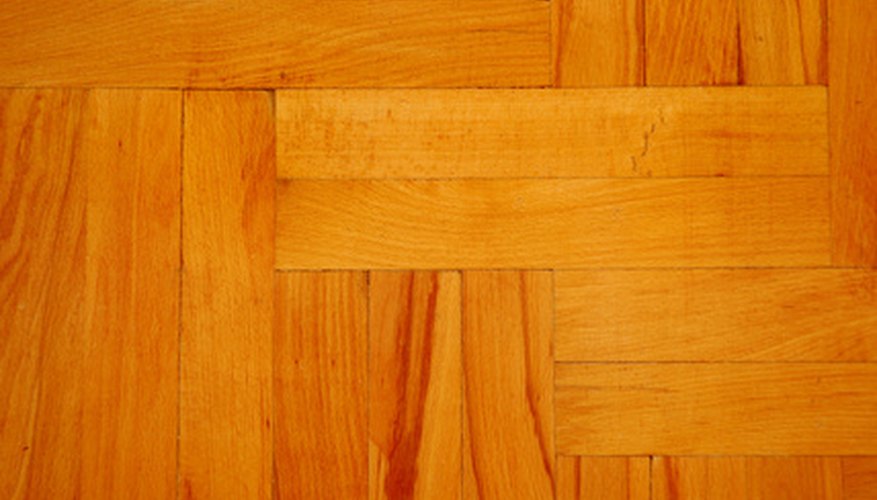Oak flooring is a semi-porous material that absorbs water and other liquids which, when left unattended, can cause black mould to develop on your oak floors. Luckily, because oak flooring is semi-porous, you can clean and remove black mould from your hardwood floors. Thorough removal of black mould from your oak flooring is important because black mould spores spread quickly, and once they spread beneath your floor, the flooring and sub-flooring will have to be replaced. Use supplies found at home and the hardware store to completely remove black mould from your oak floors.
- Oak flooring is a semi-porous material that absorbs water and other liquids which, when left unattended, can cause black mould to develop on your oak floors.
- Luckily, because oak flooring is semi-porous, you can clean and remove black mould from your hardwood floors.

Spray your oak floor where black mould is present with plain water in a spray bottle. Wetting down the black mould keeps the mould spores from becoming airborne during the cleaning and removal process.
Measure 118 ml (1/2 cup) of general all-purpose disinfectant cleaning solution and pour it into a 3.8 litre (1 gallon) bucket filled with hot water. Soak a clean cloth in the solution and use it to scrub the black mould areas of your oak floor. Dunk the cleaning cloth in the solution frequently and change the disinfectant cleaning solution when it looks dirty.
Combine 473 ml (2 cups) of hydrogen peroxide and enough warm water to fill your bucket. Wash down black mould areas on your oak floor using the peroxide solution. Peroxide kills black mould spores that are in the grain of the wood, preventing them from growing and returning.
- Combine 473 ml (2 cups) of hydrogen peroxide and enough warm water to fill your bucket.
- Wash down black mould areas on your oak floor using the peroxide solution.
Dry your oak flooring with a clean cloth. Open windows, if possible, to aid in the drying process.

Sand down your oak flooring if there is any discolouration from the peroxide solution. Always go with the grain when sanding your floor. Wipe away any sawdust using a cloth dampened in plain water.
Touch up the finish of your oak flooring using a wood flooring finish. Match the colour of your oak floor by bringing home finish colour samples from the hardware store. Apply the finish with a paint brush, painting it on in the direction of the grain.
TIP
Peroxide is a form of bleach and may discolour your oak floor surface, but this is repairable. It's more important to remove black mould before it becomes toxic and affects both your home and health.
WARNING
Wear gloves and goggles to protect yourself from toxic black mould.
